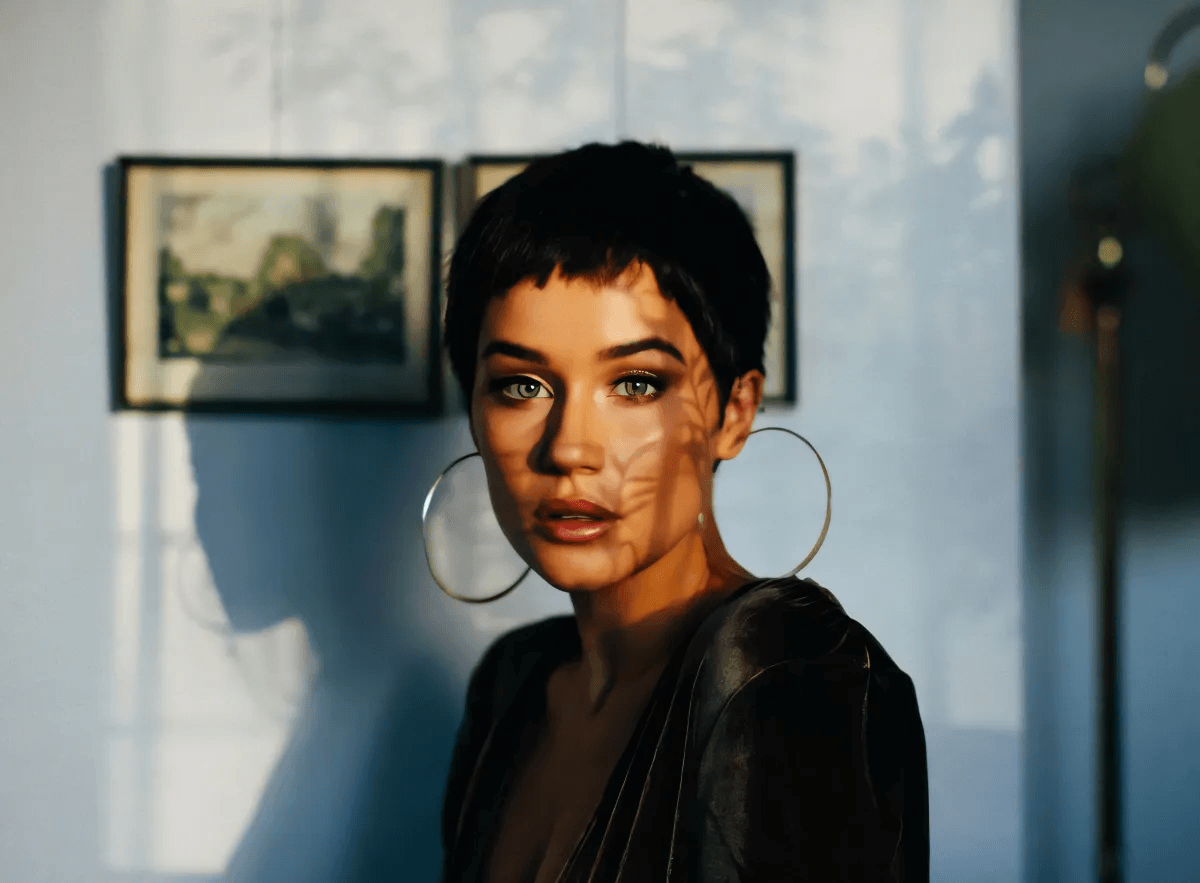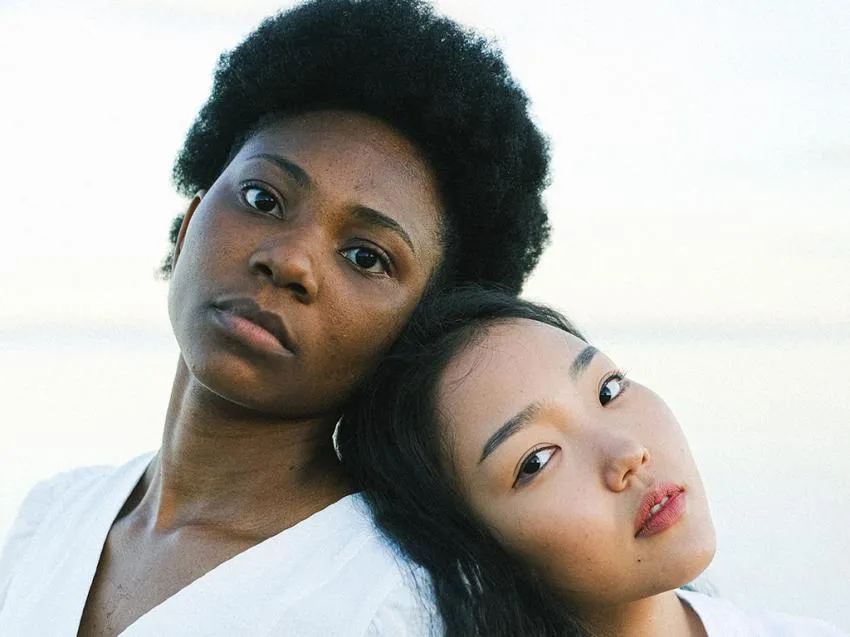The Female Gaze: Simply, What Is It?
In most aspects of our lives, we have lived in and been dominated by a mostly male point of view regarding the world. From movies to shows to books, plays, art, and more, our society has made sure to fit itself into this view regardless of whether or not focusing too much on it would cause an unbalance in the general experience of people.
In only seeing the male perspective we completely forget and ignore the female one, which then leads to a lack of understanding and appreciation for the female perspective. This is where the female gaze comes in.

The Female Gaze
The female gaze is a new perspective, and there is not much information about it. This concept is still being explored and defined by the people who are now beginning to study and experiment with it.
When you look up information on the female gaze, most of what you will find are pieces from people who are either studying film, working in the film industry, and film enthusiasts. This is mostly due to the fact that the first time the female gaze was coined was in a 1975 essay titled Visual Pleasure and the Narrative Cinema, written by Laura Mulvey.
Since then, mostly people from the film industry, have slowly been exploring this concept and translating it into visual works of art for others to enjoy.
What is the female gaze?
Essentially, the female gaze is the way that women are portrayed through the eyes of a woman instead of a man. Through the eyes of a woman, women are seen as people with feelings and intelligence. The focus isn't necessarily on what the eye can see but on what the heart can feel.
The female gaze looks to evoke emotions and feelings, focusing on touch, interactions, and atmosphere instead of action and just sexuality. The female gaze looks to balance the man and the woman, making them equals in all areas.
So, the female gaze is not the exact opposite of the male gaze, which focuses on stimulating visual cues, desire, action, logic, sex, ego, and objectification (mainly of women), among other things. Even when female desire is shown and represented, through the female gaze, the character that is being desired by another character (whether principal or secondary) isn't objectified.
As Wit and Folly said in her video essay: when female desire is shown through the female gaze, it doesn't objectify the man (or partner), instead it helps both masculine and feminine energies move effortlessly between being the object and the subject of the desire between the two.
Through the female gaze, the characters are seen as human and relatable, showing both strength and vulnerability.

Analyzing the female gaze
Whenever we see people analyzing the female gaze, we almost always see them refer to three points that Laura Mulvey makes in her 1975 essay. These points point out and summarize how the male gaze works and, who and what it affects in film specifically.
The first aspect is the camera, then we have the spectators and the characters in the film. The camera and the audience are second to the characters, which are the ones who primarily create the illusion. But the camera helps by pointing out, or focusing, on what the male gaze usually focuses on, the physical, the action, the logical, and not the emotional or spiritual.
With the help of the camera and the characters, the audience is then shown and put into the perspective of the male gaze. A product of one of many male fantasies shown through different media. As Wit and Folly state, it masculinizes the audience regardless of whether they are men, women, or any other gender.
To balance out the scales, Joey Soloway (previously Jill Soloway), recreated the three basic principles that contributed to the male gaze in movies, to fit and describe the female gaze.
The first principle is the Feeling Seeing. When explaining this principle Soloway describes that it is a way to get inside the protagonist. Meaning that, by making the camera subjective, they use the frame to invoke a feeling of in-feeling, rather than looking at the character.
In simpler terms, the camera makes the audience feel what the characters are feeling. Reclaiming the female body and using it to fuse mind, body, and feelings as a tool to invoke these sensations to the audience.
The second principle Soloway called it The Gazed Gaze. In this part, the components of the story convey to the audience what it feels to be the object of the gaze. What it feels to be seen, to be looked at, to be the object of actions, emotions, situations. And, what it feels like to have to live with the consequences of being the object of the gaze.
The final principle is Returning the Gaze. Here, the one who used to be the object says 'I see you seeing me and I don't want to be the object anymore, I want to be the subject so that I can make you the object'.
In a sense, the elements of the story make the audience feel like they are the ones being gazed at as if they are the objects themselves.
Or, as Wit and Folly put it, to switch the roles of the characters and audience equally between object and subject of desire and the gaze.

Masculinizing vs feminizing the audience
While neither the female nor male gaze is a fixed perspective, there are things that happen whenever the audience sits down to consume a work of art in either of these points of view.
When the audience consumes a male gaze-centered story, the perspective masculinizes the audience. That is, it gives the audience masculine characteristics. In the case of the male gaze, the masculine characteristics include those of making the audience think of the woman as an object no matter the gender of the person consuming the work.
Think about the women you have encountered that say things like "women need to serve men to make them happy" or "you should always look good for your man". This type of thinking is partly created and reinforced by works of art that are from the male gaze.
With the female gaze, however, the audience is feminized. Meaning that the audience is made to feel the desires of the women. These female desires include wanting to make the audience know how women really feel to leveling the playing field on every aspect of life between men and women.
So, the female gaze aims more to bring awareness, consciousness, and balance. Whereas the male gaze, up to this point, aims to keep the masculine on top and make everything else seem lesser. As well as diminishing and objectifying in many cases.
As the female gaze is explored and experienced progressively, there will be more elements added to it that will help it be better defined. And, to encompass every aspect of what it means to be feminine to different women.
Until then, we encourage you to look deeper and explore what is the female gaze and what does it mean to be feminine. Maybe you too and add to the emerging discussion about perspectives in the arts.
Related Reads
K-Dramas, Bollywood & Beyond: Cultural Variations Of The Female Gaze Challenging Western Norms
Strength Through Vulnerability: Female Gaze Portrait Photography Techniques
Brand Blueprint: Female Gaze Marketing Strategies For Authentic Women's Representation
From Billie Eilish To Chappell Roan: How The Female Gaze Is Rewriting Desire In Music Videos
Meme Wars & Viral Call-Outs: The Female Gaze As Social Media Rebellion
Mutual Desire & Consent-First Tropes: Applying The Female Gaze To Romance & Romantasy Novels
Beyond The Male Lens: How Indie Games Are Redefining Heroines With The Female Gaze
Emotional AI Ads: Why Personalized Banner Ads Need A Female Gaze Overhaul
TikTok & Reels Revolution: How The Female Gaze Is Transforming Influencer Content
The Female Gaze: Simply, What Is It?
Connection Beats Spectacle: Why Female Gaze Erotica Is Outranking Visual Porn For Women
Opinions and Perspectives
This perspective feels like it's leading us toward more authentic and meaningful storytelling.
It's amazing how much depth this adds to character interactions and relationship dynamics.
The way this approach humanizes all characters equally is revolutionary for storytelling.
The emphasis on emotional storytelling over pure visuals is something that resonates deeply with me.
This really highlights how perspective shapes everything in storytelling, from camera angles to character development.
It's encouraging to see how this is slowly becoming part of mainstream discussion in film circles.
The article's explanation of how camera work can convey feeling rather than just showing is brilliant.
I think this perspective helps create more universal stories that everyone can connect with.
The way emotional depth is prioritized really changes the whole viewing experience.
Appreciating how this concept encourages more nuanced and complex character portrayals across genders.
The influence of the female gaze on character development is something I find particularly interesting.
Looking forward to seeing how new filmmakers interpret and evolve these concepts further.
This framework helps explain why certain scenes feel more authentic or relatable than others.
The discussion about desire without objectification is crucial. It shows there's a better way to portray intimacy.
I've started noticing these differences in recent music videos too. The visual storytelling has really evolved.
It's fascinating how this concept has evolved since Mulvey's original essay in 1975. We've come so far.
The part about reclaiming agency through Returning the Gaze is particularly powerful in today's context.
I'm seeing these principles more in photography too, not just in film. It's spreading across all visual arts.
This makes me think about how much potential there is for storytelling when we embrace different perspectives.
The article's point about balance really resonates. It's not about dominance but equality in representation.
Would be interesting to see how these principles apply to video games, especially with more women entering game development.
I love that this isn't about excluding anyone but rather about expanding our understanding of perspective.
Some of these concepts remind me of what I've read about feminist literature. There's definitely overlap.
It's interesting how this applies to marketing too. You can really see the difference in ads directed at different audiences.
The emphasis on emotional connection over physical appearance is something I've always valued in storytelling.
Reading this makes me want to rewatch some of my favorite films to analyze them through this new lens.
I think we're seeing more of this in TV than film right now. Probably because TV has more female showrunners.
The distinction between subject and object in desire is fascinating. Never thought about it quite that way before.
Just finished a film that perfectly exemplifies these principles. It's encouraging to see more content embracing this approach.
This explains why I connect so deeply with certain films but feel disconnected from others. It's all about the perspective.
The part about feminizing the audience really made me think about how media shapes our perceptions subconsciously.
I've been following this topic for years and it's amazing to see how the conversation has evolved, especially in indie films.
The article mentions balance a lot, which I think is key. It's not about replacing one perspective with another but finding harmony.
Wonder how streaming platforms have influenced this evolution. Seems like there's more room for diverse perspectives now.
The concept of feeling seeing versus just looking is revolutionary. It's changing how I approach my own creative work.
This makes me think about how many classic films might be different if they'd been made with these principles in mind.
I appreciate how the female gaze isn't about excluding men, but rather about including everyone's full humanity.
The way the article explains the three aspects of the male gaze really helped me understand why certain films make me uncomfortable.
My film professor introduced me to these concepts last semester and it completely transformed my understanding of cinema.
Anyone else notice how different romantic scenes feel when filmed through the female gaze? There's such a distinct difference in approach.
We need more women in director roles to really see these principles in action. Theory is great but practical application is crucial.
Interesting how the article points out that this is still an evolving concept. Makes me excited to see how it develops further.
The focus on feeling rather than just seeing is something I've always appreciated in certain directors' work, though I never had the vocabulary to describe it.
I'm curious about how these principles apply to other art forms beyond film. Does literature have its own version of the female gaze?
What really struck me was how the female gaze treats both parties as equals in desire. That's such a fundamental shift from traditional portrayal.
Understanding these concepts has completely changed how I watch movies. I can't unsee the different approaches now.
The article could have included more concrete examples from contemporary media. Theory is great, but practical examples help understanding.
I think we're oversimplifying by suggesting that all male-directed content objectifies women. There are nuances we're missing in this discussion.
This reminds me of watching Portrait of a Lady on Fire. The way that film captured desire without objectification was revolutionary.
I work in film production and we're actively trying to implement these principles, but it's challenging to break away from ingrained habits.
The concept of Returning the Gaze is particularly powerful. It's about reclaiming agency and changing the power dynamic in storytelling.
I've noticed more TV shows recently employing these techniques. It's subtle but makes such a difference in how characters are portrayed.
The article makes an excellent point about how the female gaze isn't just the opposite of the male gaze. It's about creating balance and showing full humanity.
I struggle with the idea that emotions and feelings are exclusively feminine traits. Men feel deeply too, we've just been conditioned to hide it.
As a film student, I've been studying this concept extensively, and I think there's still so much more to explore about how the female gaze can transform storytelling.
The section about masculinizing versus feminizing the audience was eye-opening. I've never thought about how media consumption actually shapes our perspective that way.
Joey Soloway's three principles really helped me understand what the female gaze actually means in practice. I never thought about how the camera could make you feel rather than just see.
I found it particularly interesting how Laura Mulvey's 1975 essay is still so relevant today. Makes you wonder how slowly things change in the entertainment industry.
That's an interesting point, but I think understanding these different perspectives helps us recognize patterns that have dominated media for decades. It's not about separation, but awareness.
While I appreciate the concept, I'm not entirely convinced that we need to categorize perspectives as strictly male or female. Wouldn't it be better to just focus on making well-rounded characters regardless of gender?
The part about 'Feeling Seeing' really resonates with me. I've noticed how different films feel when they prioritize emotional connection over visual objectification.
I'm fascinated by how the female gaze focuses on emotions and atmosphere rather than just physical appearances. It's refreshing to see this perspective gaining more attention in modern media.
